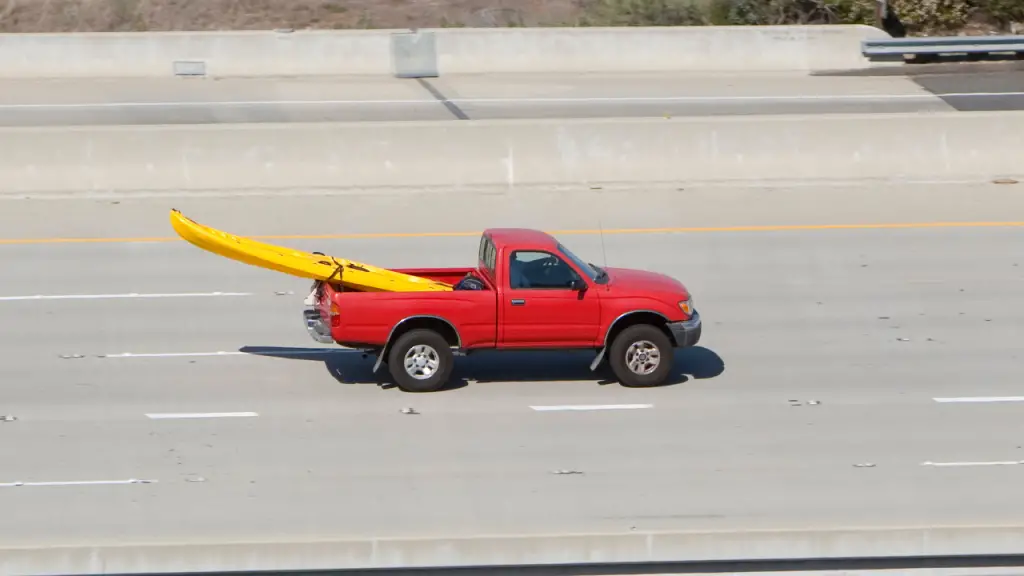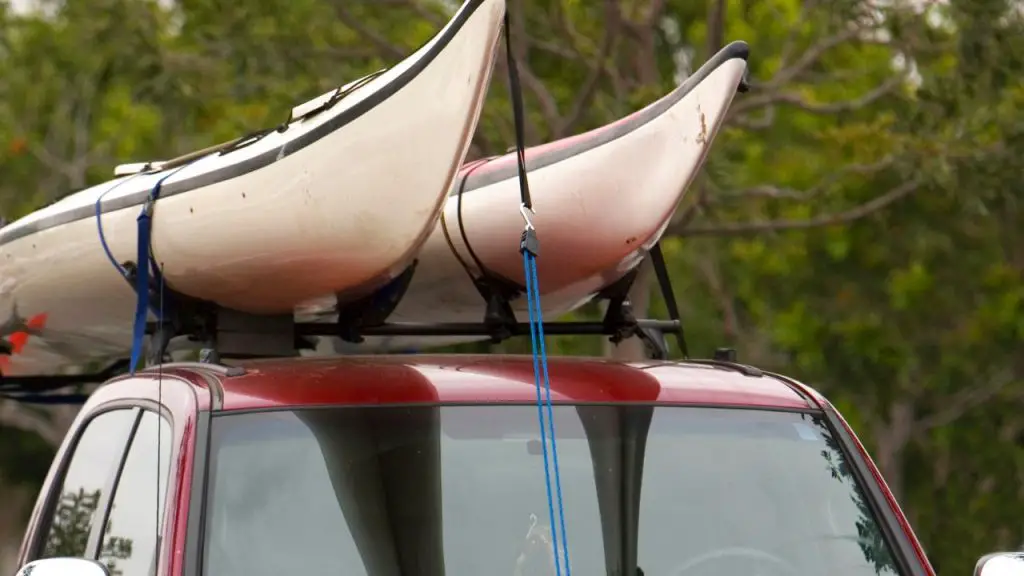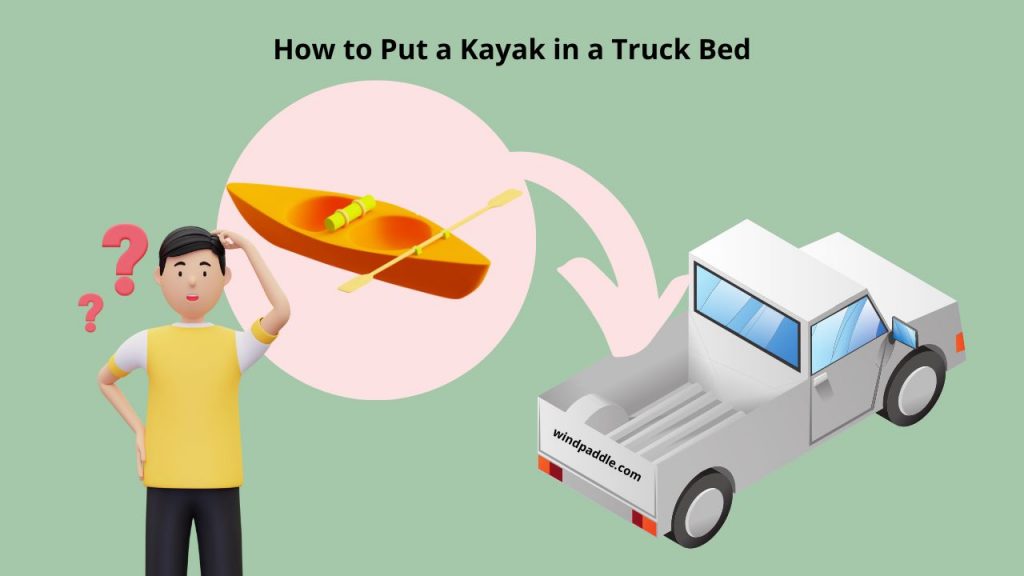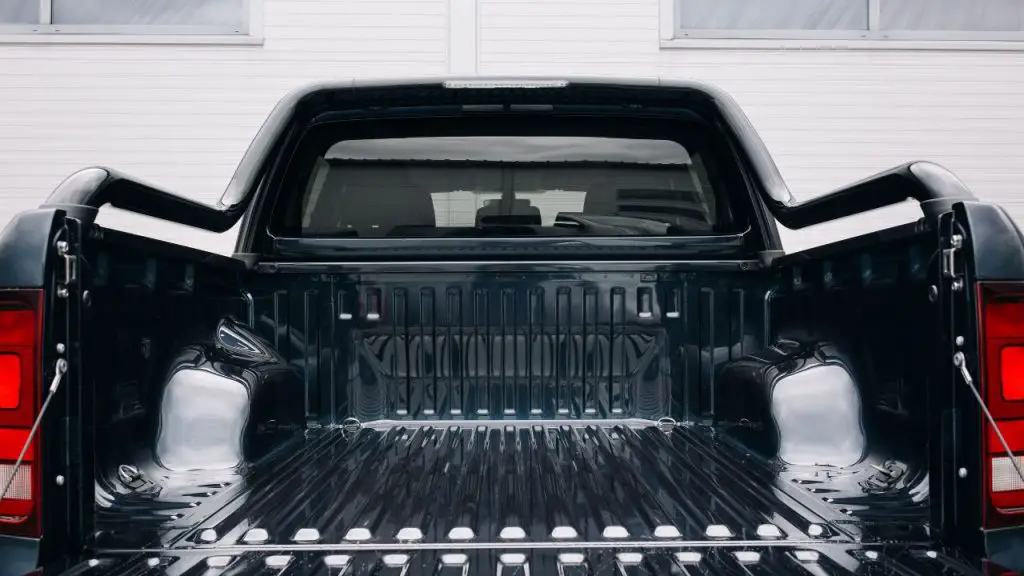Securing your kayak in a truck bed becomes necessary when you are left with no option but to transport your kayak via a truck. But how to secure a kayak in a truck bed?
Transporting your kayak in your truck can be a challenge, but with the right preparations, it can be done safely and easily. In this blog post, we will teach you how to properly secure your kayak in your truck bed. You would also see other options that are available for you to transport your kayak. Let’s get started!
Table of Contents
How to Secure Kayak in Truck Bed
Securing your kayak in a truck bed could be crafty, however, there are tips to help you secure your kayak in a truck bed and they are as follow:
Ensure that your truck bed can properly support the weight of your kayak before you load it. Your truck bed should be able to support at least 70% of your kayak’s length.

Ensure that your kayak stays put and is well-balanced on the truck bed.
Make sure the tailgate is not flipped up as the best way to transport your kayak in a truck is to have the tailgate down.
Slide the kayak in a bow first and prevent it from falling out while you tie it down without rushing by making good use of available anchor points.
Pass a cam strap through these anchor points which may either be on your truck’s bed rail or floor. And ensure the strap runs through your kayak’s bow as well.
Also, run a cam strap through the truck’s anchor points and allow it to pass through the grab handle or mounting point on the stern of your kayak while it forms a V
Avoid using ratchet straps which may allow your kayak to suffer damage from too much pressure.

If your kayak extends out of your truck beyond four feet, then the law requires you to attach a red flag to it to prevent other road users from hitting it.
While transporting your kayak, drive at a reasonable or relatively low speed while you frequently check your rearview mirror.
And when you observe that your kayak is not completely stationary when the truck is in motion, stop immediately.
How to Put a Kayak in a Truck Bed
Your kayak is not just something you dump in a truck bed. There are steps to placing it in the truck bed. These steps range from preparing the truck bed to attaching a red flag for safety. Before you put your kayak in a truck bed, you must clear and make room for it.
You must load your kayak safely, properly position the kayak as well as secure the fastening straps. And if need be, you must lawfully attach a red flag for safety. These steps are well explained below.

Step 1: Clear Your Truck Bed and Make Room
Preparation is the first thing to do before you venture into putting your kayak in a truck bed. Clear your truck bed of any debris, dirt, or clutter. Ensure that it is free from all of these and free.
You should empty your truck bed to allow space for your kayak. Every unwanted cargo should be cleared to prevent your kayak from getting damaged.
If your truck lacks a bed liner, we’d suggest that you put one in place before tying your kayak down. The bed liner will help protect the truck bed as well as your kayak from damage.
While the bed liner may not give you the desired padded feel, you can lay a small foam pad over the front of the truck bed. The foam pad will allow for a soft surface for your kayak’s bow to land on.
You can also prevent instances of slippage from occurring by utilizing a rubber mat on the floor of the truck bed.

Step 2: Load Your Kayak into the Truck
The next thing to do after you must have cleared and made room for your kayak is to load it in by using a trolley or carrying it with a friend.
You have to lower the tailgate before sliding your kayak in. You do this by keeping the hull of the kayak down, while you lift one end of the kayak.
If you intend to use a hitch truck bed extender or a sliding bed extender, then you can leave the extender open before loading the kayak but this will cause your kayak to overhang.
However, if you don’t want an overhang, you can load your kayak by raising the tailgate. This way, one end of the kayak will be left to angle up in the air.
But you need to take caution by strapping it well and adding more cushion to the tailgate to prevent your kayak from sliding out.
Step 3: Position the Kayak in the Truck Bed
Tying your kayak may be challenging if you don’t position your kayak well. When trying to position your kayak in a truck bed, it is best to think diagonal. Placing your kayak in a diagonal position will allow for more stability.
Now, to achieve this proper and stable positioning, all you need to do is position the stern of your kayak in such a way that it is angled into the front left corner of the truck bed while the bow aligns with the tailgate at the opposite corner.
Positioning your kayak in a diagonal position or at an angle will help to keep your vessel stationary and this will also prevent your kayak from sliding out.
Step 4: Secure Your Fastening Straps
Securing your kayak in place will require the use of cam straps as they can prevent the parts of your kayak from getting damaged. The role of these fastening straps cannot be overemphasized when you need to get your kayak safely to its destination.
Run the cam straps over either side of your kayak and pull them through the side grab handles. Afterward, the ends of the cam straps should be tied to the truck’s anchor points located on opposite sides.
After you are done pulling the straps through, take and pull the buckle to ascertain stability. Avoid running the cam straps underneath your kayak to prevent slippage.
Not too tight, not too loose, just make your kayak secure enough. While too much tightness may damage your kayak, too much looseness can cause your kayak to slip out too.
AUGO Ratchet Tie Down Straps –4 PK– 15 FT
Step 5: Attach A Red Flag at the End of the Kayak
Generally, in most locations, when your vessel sticks outside beyond the rear of the truck by 4 meters, you need a brightly-colored flag. The purpose of which is to signal other road users that your vehicle’s length is beyond normal to ensure safety
If you don’t have a flag, you can use a DIY handkerchief or towel to replace it. The most important thing is to ensure that whatever you use is tightly attached to prevent it from blowing off.
Sometimes different locations may have different regulations, so it’s safe for you to check your local rules to ensure a lawful transport of your kayak.
Keeper – 18″ x 18″ Bungee Safety Flag
Other Options to Transport a Kayak
If you don’t feel confident transporting your kayak using a truck bed, there are other options for you to consider and they are:
RS Tonneau System: This is a rack system created to be mounted above truck beds. Pairing the RS tonneau system with a kayak rack gives the best combination of a convenient truck bed, a tonneau cover security, and the effortlessness of a kayak rack.
MaxxHaul 70231 Hitch Mount Pick Up Truck Bed Extender For Ladder
Kayak Trailer: Affordable and light, a kayak trailer makes towing easy. You’ll hardly notice that you are towing a kayak! It makes loading and launching of kayaks easier too.
RIGHT-ON TRAILER Multi Sport Multi Sport Trailer
Find Pickup Truck Toppers Near You: When you intend to go on an adventure for days, you need a bed space for all your gear and luggage and the best option would be a Pickup Truck Topper. This is because its mounting point helps to secure a kayak rack and keeps your gear dry, arranged, and secured.
Rent a kayak on getting to your destination: Ahead of making plans for your trip, you should look for destinations where you can rent kayaks for the day. These destinations include Yellowstone and Mammoth Cave among others. The purpose of renting a kayak is to avert worries related to transportation to and fro.
FAQs
Can you put kayaks in the back of a truck?
Yes, you can transport your kayak in the back of a truck. However, depending on the length of the kayak, you may have the tailgate up or lowered.
How far can a kayak stick out of a truck bed?
A kayak can stick out of a truck up to 4ft but beyond this length, a bright-colored flag must be attached to ensure the safety of other road users.
How do you transport a 16-foot kayak?
A 16-foot kayak can be transported on top of your vehicle or a trailer. However, you can also utilize a kayak rack designed for a pickup truck, to ensure that your kayak is well secured.
How do you transport a 15-foot kayak?
A 15-foot kayak will need a tailgate extender to be well transported. This way, it can be well balanced and secured as it journeys to its destination.
How do you secure a kayak in a truck bed with a tailgate up?
If you intend to secure your kayak in a truck bed with the tailgate up, then one end of your kayak will angle up in the air while the other end will rest against the tailgate.
Final Words
The thrills of kayaking are overwhelming but transporting your kayak to its destination can be more overwhelming. However, with all of the tips and steps that we have provided, if you intend to transport your kayak using your truck bed, then you are good to go!




